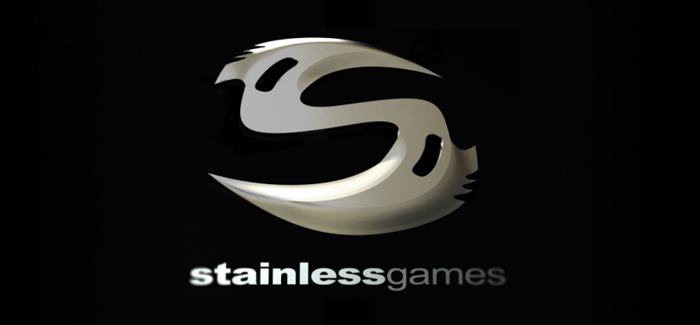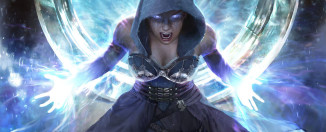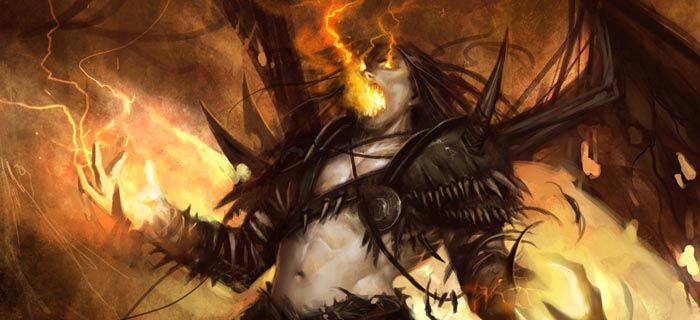From Carmageddon to Planeswalking: Interview with Stainless CEO Patrick Buckland
Whether you first heard of Stainless Games from Magic the Gathering: Duels of the Planeswalkers or their original (and literal) smash hit Carmageddon, this dev shop is responsible for some of the most addictive gaming experiences I’ve encountered. Hell, if it weren’t for them, I would have never developed a compulsive impulse to mow down pedestrians everywhere I drive. You know… for points.
Anyway, we were somehow able to get a few questions in front of Stainless’ CEO, Patrick Buckland. We wanted to learn about the past, present, and future of his company’s projects.
T3: First of all, thanks for taking the time to answer these questions. We understand you’re exceedingly busy, so it means a lot to all of us! Anyway, let’s get started… In the early 90s, Stainless turned the previously beloved pastime of “vehicular homicide” into a dirty word. How will Carmageddon Reincarnation tie into the original games, and what’s been changed for this modern release?
Patrick: In two key ways: ethos, and actual characters, vehicles and locations. In 2006, SCi hired us to analyse just what made Carmageddon the great game it was. This included us soul-searching a bit as to where Carma II had maybe less ‘spark’ than Carma I (although it was also better in a lot of ways). We are applying these lessons to Reincarnation, the number one being MAKE IT FUNNY! There are still not enough genuinely funny video games out there. Carmageddon will continue to carry the torch for humour in games.
Regarding content, we want to reinforce the great driver characters we introduced in Carma I and add a few new ones. Plus some of the levels will be re-imagined versions of the originals, but in glorious 2013-o-vision.
T3: Although Carmageddon and Carpocalypse Now were pretty major titles, Stainless was relatively silent in the public domain between 1998 and 2006. Can you tell us a little bit about what the company was up to during that time, and what sparked the transition from bloodsport games to tabletop/arcade titles?
Patrick: We came to blows with SCi over royalties, which is why TDR 2000 was developed by somebody else – without us even being informed. It was a tough time, and the company only just survived. In 1999 we became part of the Scottish Vis group of companies for two years in order to avoid going under, during which time we worked on a triple-A driving game for EA Sports, which unfortunately got canned towards the end due to market overcrowding in that segment (I can’t say which segment). I personally worked on State of Emergency for Vis as Executive Director – I was sent in to turn the project around as it had disappeared up its own sporran. Then when we became independent again in 2001, we again struggled for a while as the climate for independents was awful. We then signed a big deal with Midway, but that also never saw the light of day (although not for performance reasons – they paid us and gave us a good reference). We also did some contract work that we can’t talk about as it was effectively “ghost writing” – basically, anything to keep going. Very very tough times, and at our nadir, we had only six members of staff.
With the advent of digital download (we had good contacts as Microsoft so we knew about XBLA before it was announced), we saw a ladder leading up out of the pit, so bet the company on it. And it worked. We’ve been leaders in the field ever since, and now have over 50 employees – our largest size yet, after 18 years of being in business.
T3: Our readers include many fervent fans of Magic the Gathering and DOTP in particular. For the most part, it appears Wizards of the Coast takes the lead in public PR for this series. What kind of working relationship do you have with WOTC? Do they dictate the majority of decisions (decklists, features, functionality), or are they granting you a license to make DOTP your own baby?
Patrick: I would be publicly shot if I said too much…. Our working relationship with WotC is superb. We are true partners, and I’m not just saying that to be diplomatic. They are the best partners we’ve ever had. In terms of the design, the big features are of course dictated by them, as it’s their product, but they do listen to us and we’ve lobbied them a few times for things that we feel are really important. We are very aware that Duels’ has to fit into a bigger brand strategy that includes the paper cards and Magic Online, so as businessmen, we understand that sometimes there are stronger forces at play than the casual observer might appreciate.
T3: We’ve seen a few bullet points about features being added to DOTP 2013 including manual land tapping. As control freaks, we think this is very cool. But with all these additions, what features will be removed from DOTP 2012 to 2013? Will things like Archenemy, Mentoring, and 2-headed giant get the (lava) axe?
Patrick: I’m sorry, but I really can’t talk about such details without breaching our contract with WotC. You’ll just have to wait and see.
T3: In DOTP 2012, players had the option to enable the instant resolution of effects. While this was welcome in the campaign, it gave players who toggled it on/off during online matches unpredictable advantages in situations where the ability to stack an instant in response to such an effect would have won the game. Similarly, coming into play effects and the End Step are simplified from their progression in regular magic. What is Stainless’ philosophy on choosing between ease of use and competitive equality?
Patrick: This was one of the core design decisions (that did come from us) right from the start with Duels. It needs to be an ‘arcade’ experience. The original remit from WotC was for “Magic Lite” but to be honest, Duels has ended-up as far more than that. There are times though when it intentionally invokes what we internally call “Duels Rules”, for the sake of pace and playability.
T3: The majority of DOTP decks so far (with a few exceptions) have been straightforward agro, will that trend continue? How much emphasis is placed on balancing power and playstyles between decks?
Patrick: Another one for WotC I’m afraid!
T3: Much like DOTP, Risk Factions successfully took a classic, long-winded tabletop experience and made it accessible in short, online bursts. Can you tell us about the thinking behind adapting Risk to Risk Factions? Will fans get to see Chairman Meow again?
Patrick: Risk Factions was another great product to work on, and another proper partnership, mainly due to working with a superb (but completely insane) producer at EA. Of course whether there is anything more from Chairman Meow is utterly down to EA, not us.
One of the great things with Carma is that I won’t have to keep non-answering interview questions like that, as what we can say will be down to US and US only!
T3: Sorry about that! We’ve heard you once purchased a farm and held real-life Carmaggedon events on premise. Can you tell us about the culture at Stainless, as well as the average number of warrants for vehicular crimes issued per employee?
Patrick: That is indeed true. We also blew up cars and did all sorts of other crazy stuff. We’re much more sensible now though. Oh no, hang on, no we’re not. Search for “Stainless Christmas Party” on YouTube…… We usually average about four police cars per night.
Wrap-up
We’d like to thank Patrick for his time, as well as all of Stainless Games for developing software that has robbed us of countless, possibly productive hours. Speaking of productivity, here’s that Christmas party video previously referenced. I… there are no words.







They… killed the room. O_O
Thanks for the interview, Patrick, WiNG. Very enlightening. Except in regards to DotP, of course.
[…] few months ago, we had the privilege of speaking with the CEO of Stainless Games, Patrick Buckland. Stainless developed every Duels game, but Patrick encouraged us to speak to Wizards for both sides […]
I will be curious as well as thinking about what you will be talking about here.